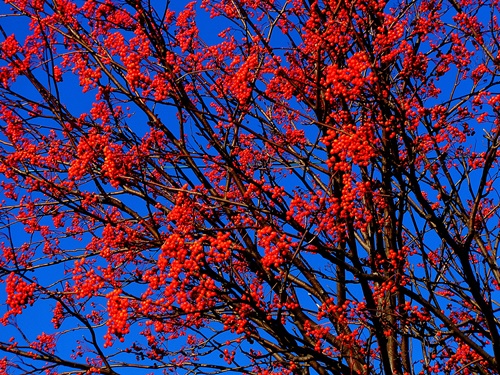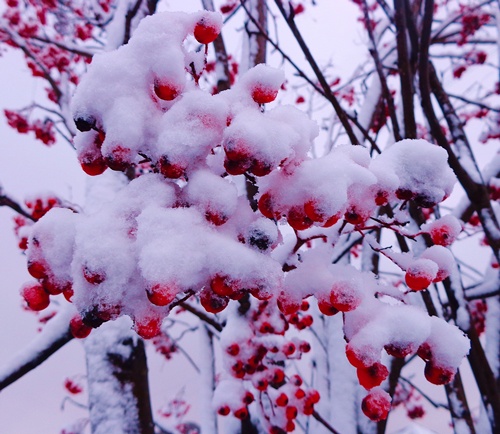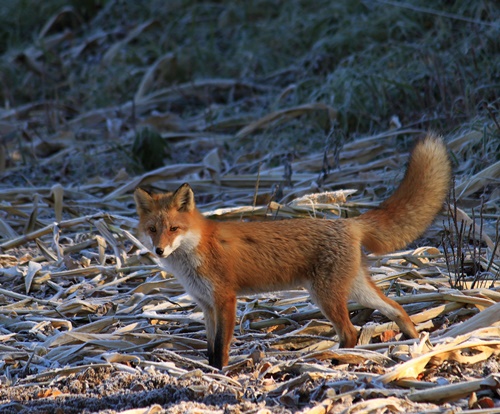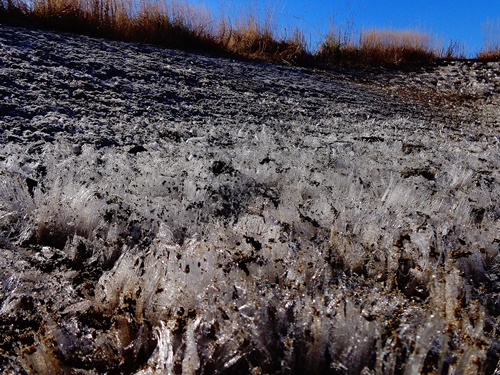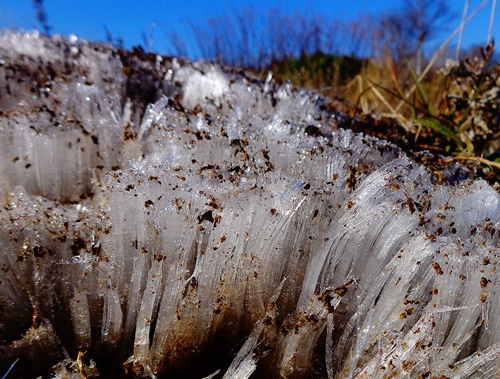Even though it’s mid-November, there is no snow on the ground here in Sounkyo. The snow that fell last month has melted in the hot spring village.
However, the weather forecast predicts snow from tomorrow. The temperature should stay low after that, meaning that Sounkyo is going to get cold again.
Meanwhile, the Sorbus commixta berries are growing thick again this year.
There are various possible reasons for their remarkable growth this year. One is the good weather we enjoyed during the blossoming season. And another is that the low rainfall allowed the pollen to remain in the air, which in turn led to a higher pollination rate.
In recent days, flocks of Turdus eunomus and Coccothraustes coccothraustes have appeared to feed on the berries.
I wonder if Bombycilla garrulus will also make their usual appearance this year.
Photo: Sorbus commixta berries Nov. 12
However, the weather forecast predicts snow from tomorrow. The temperature should stay low after that, meaning that Sounkyo is going to get cold again.
Meanwhile, the Sorbus commixta berries are growing thick again this year.
There are various possible reasons for their remarkable growth this year. One is the good weather we enjoyed during the blossoming season. And another is that the low rainfall allowed the pollen to remain in the air, which in turn led to a higher pollination rate.
In recent days, flocks of Turdus eunomus and Coccothraustes coccothraustes have appeared to feed on the berries.
I wonder if Bombycilla garrulus will also make their usual appearance this year.
Photo: Sorbus commixta berries Nov. 12
